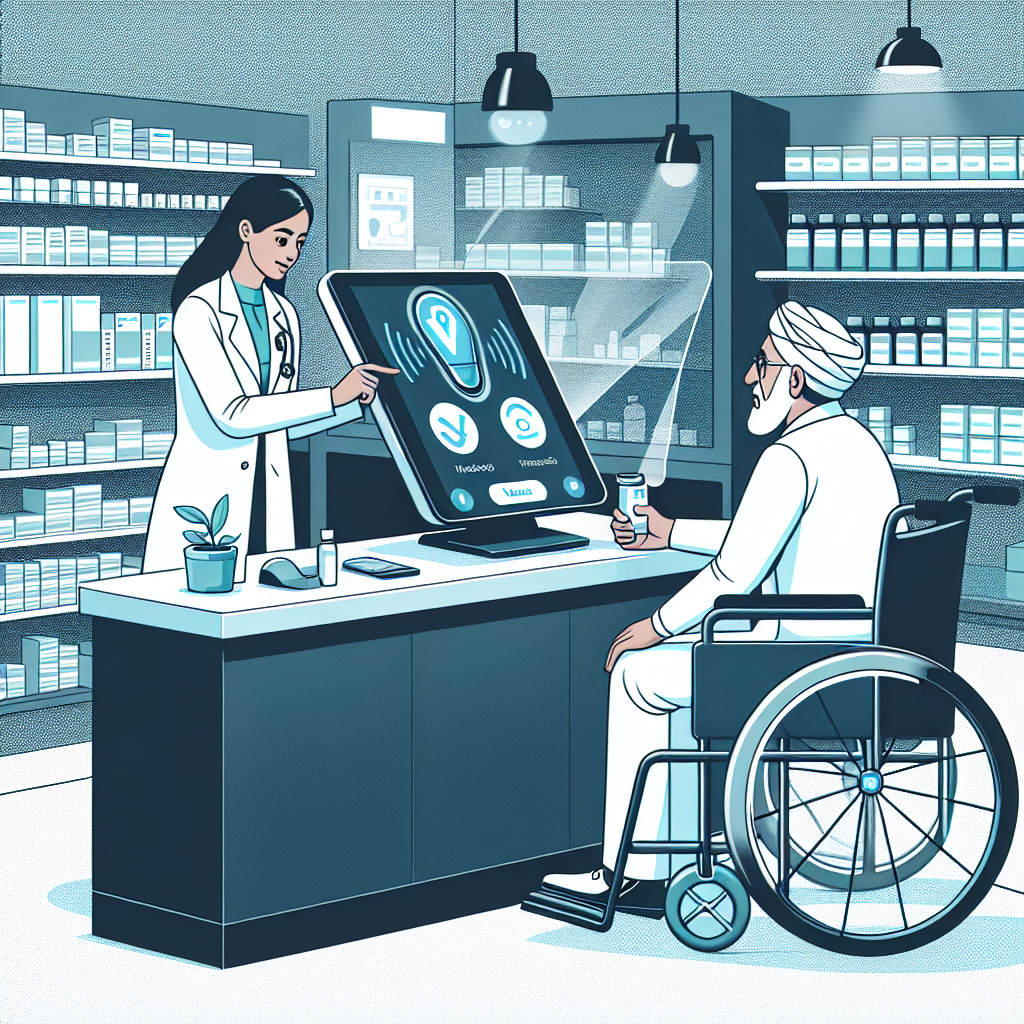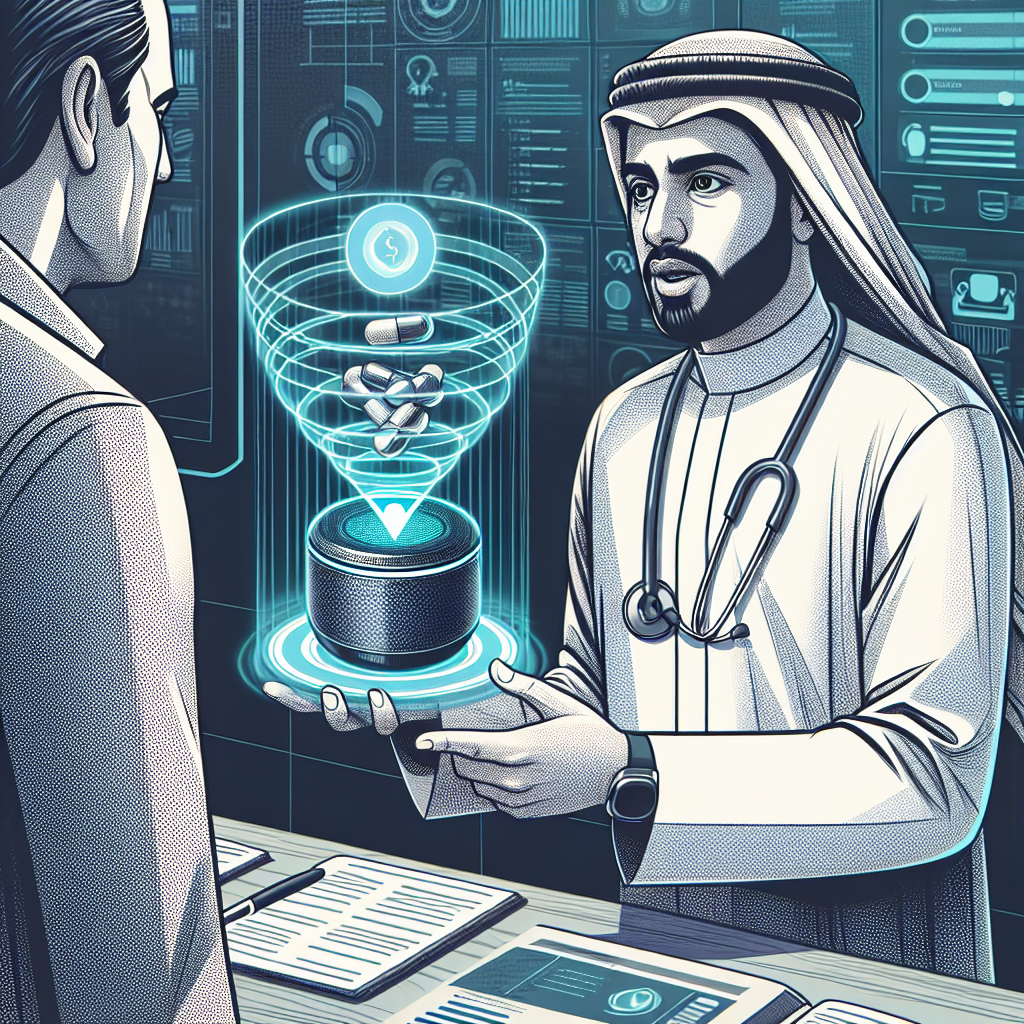
Voice-Activated Prescription Refills are on the rise, marking an important stride in the development of modern healthcare practices. Utilizing advancements in voice recognition technology, these systems allow patients to refill their prescriptions using simple voice commands. This technology is not only convenient but also promotes patient safety, adherence to medication, and overall patient satisfaction.

Studies have shown that voice-activated systems can significantly reduce healthcare costs and minimize patient wait times. Furthermore, they reduce the risks of medication errors and increase the efficiency of healthcare professionals. This is especially beneficial for elderly patients or those living with chronic conditions, who require recurrent medication refills.
To understand the functioning of these systems, imagine a conventional prescription refill; you would typically have to call your healthcare provider, navigate through automated prompts, wait on hold, and then communicate with a member of healthcare staff. However, with a voice-activated system like Amazon's Alexa (source), you just need to dictate a specific command.
This efficient system is the embodiment of healthcare industry's increasing reliance on digital tools and highlights the vast potential of Artificial Intelligence (AI) in reshaping patient care.While the use of voice-activated prescription refill systems is still in its early stages, its introduction denotes an exciting step towards futuristic healthcare support, making medical care more accessible, individualized, and accurate.
In the healthcare industry, the utilization of voice-activated prescription refill systems (VAPRS) is a transformative application of voice recognition technology. This sophisticated system, a marriage of artificial intelligence (AI) and voice recognition, is designed to revolutionize patient access to essential medication refills.
Voice recognition, the primary technological foundation of VAPRS, is centered on the ability of a machine or program to receive and interpret dictation or to understand and carry out spoken commands. This technology can detect specific phrases or words from spoken language and convert them into commands.
Artificial Intelligence plays an invaluable role in this advanced healthcare technology. AI, alongside machine learning (ML), gives the voice-activated prescription refill system the capability to learn and adapt to different speech patterns, accents, and nuances. Furthermore, the AI component allows the system to predict user needs based on historical data, thus enhancing efficiency and user experience. Therefore, these voice-activated refill systems turn into personalized medication assistants.
In the context of healthcare, VAPRS not only offers convenience but also plays an essential role in improving patient adherence to medication schedules. As patients may overlook or forget to refill prescriptions manually, VAPRS provides automated reminders to ensure uninterrupted access to necessary medication. Various studies have shown an improvement in medication adherence with the implementation of such technology, emphasizing how VAPRS can be life-changing.
To summarize, the technological foundations underlying voice-activated prescription refill systems - - voice recognition, artificial intelligence, and machine learning - - deliver a profoundly advanced solution in the healthcare arena. They foster an automated, efficient, and personalized system that can significantly improve the quality of patient care and medication adherence.
In the rapidly evolving healthcare landscape, Voice-Activated Prescription Refill Systems are a groundbreaking innovation enhancing the sphere of healthcare support. Loaded with an array of significant benefits, these systems are making it easier and more convenient for patients to manage their medication schedules.

The most apparent advantage that these systems offer is convenience. With the help of Voice-Activated Prescription Refill Systems, patients no longer need to wait in long queues at the clinic or pharmacy for prescription refills. All they have to do is give a command to their smart device, and the refill request is submitted, reducing time and energy involved.
In addition to convenience, these systems provide a strong layer of privacy for patients. Often, patients might feel uncomfortable discussing their health conditions or prescription details over the phone or in-person where someone could overhear. These voice-activated systems allow patients to refill prescriptions privately in their homes, safeguarding their medical information.
Maintaining adherence to medication schedules is an essential aspect of treatment adherence, and yet, it's a common challenge. Voice-Activated Prescription Refill Systems significantly improve adherence by allowing regular and timely refills, reducing the chances of missed doses. This streamlined process has potential to enhance patient health outcomes and overall health care quality. Studies suggest that consistent medication use leads to healthier patients and decreases hospital admissions, further substantiating the crucial role of these systems in efficient healthcare support.
Automating prescription refills with the implementation of Voice-Activated Prescription Refill Systems bears significant impact on healthcare providers, specifically by reducing their administrative burdens and saving their valuable time.
The tedious and time-consuming task of manual prescription refilling is a ubiquitous pain point for healthcare providers across the globe. With the introduction of voice-activated systems, providers can streamline this process immensely. Traditional methods require manual data entry, which is subject to human error and slows down the overall process. Evidence suggests that automation in prescription management minimizes the risks of medication errors and enhances patient safety.
Further, adopting voice-activated prescription refill systems can relieve the administrative burden endured by staff within healthcare settings. It eliminates the extra steps involved in manual prescription management, like coordinating with pharmacies, updating patient records, and managing refill requests. The saved time and efforts can be redirected toward patient-focused care.
The impact doesn't stop there. Pharmacies, the other major stakeholder in prescription management, can also significantly benefit from these systems. Research indicates these systems minimize wait time for patients and significantly speed up prescription processing. The automated refill requests provide pharmacies with realtime updates, allowing them to more efficiently manage their supply chain and medication stock.
On the whole, the implementation of voice-activated prescription refill systems is enhancing healthcare support by making it convenient, accurate, and efficient for healthcare providers and pharmacies. As we move towards a more digitized healthcare landscape, the relevance and implications of such advancements will continue to grow and shape the future of healthcare delivery.
While Voice-Activated Prescription Refill Systems hold promising potential to improve patient-oriented care, the implementation of such technology is not without its challenges. One of the principal issues concerns technology adoption barriers.
Traditional pharmacies may be hesitant to adopt such innovations due to the high costs related to purchasing and installing the new hardware and software. Additionally, users themselves might resist the change due to a lack of digital literacy, security and privacy concerns, or a simple preference for human interaction. Studies have shown that successful deployment is often reliant on encouraging adoption through clear communication and training about the benefits of the system.

The accuracy of voice recognition software is another major hurdle. Despite advancements, speech technology is still in its developmental stage and there may be discrepancies in recognizing the human voice, especially with variations in accents or dialects, speech impairments, and background noise. Organizations like Open Speech Platform are continuously working to optimize voice recognition software to tackle this challenge.
Lastly, the integration with existing pharmacy management systems can be complex. The voice-activated system must be compatible with a variety of pharmacy systems and incorporate data accurately for seamless services. Pharmacy managers might also worry about the potential disruption to operations during the transition period.
In conclusion, while the advent of voice-activated prescription systems is indeed exciting, its adoption in the healthcare field may likely be a gradual and thoughtful process. Overcoming barriers associated with technology adoption, refining voice recognition software, and ensuring effortless integration will be pivotal for successful implementation and scale of these systems.
As technology evolves, so does its application within the healthcare industry. One area of considerable interest is the utilization of voice-activated prescription refill systems. They are poised to significantly enhance patient accessibility and convenience, reducing the likelihood of skipped medication refills and consequent health risks.
These systems are already gaining traction, with the likes of Amazon’s Alexa and Google's medical platform offering their users voice-activated prescription management services. However, the full potential of such innovations remains largely untapped.
Looking into the future, it's foreseeable that these systems will feature a more intelligent, AI-driven approach to medication management. This could mean predictive analytics based on patient behavior and medication adherence patterns or the capacity to send reminders about prescription refills or scheduled doses. In addition, they might incorporate real-time health data gathered from IoT devices or digital health applications, tailoring their responses and suggestions based on individual health status, needs, and preferences.
Another prospective development involves more inclusive and wider adoption of these tools. While currently, voice-activated prescription refill systems are mostly available in technologically advanced regions such as North America and Western Europe, increasing health-tech investment in developing regions like Africa and Asia indicates a likely expansion. Technological advancement and mobile health initiatives could bridge this gap, democratizing healthcare support and making it accessible to patients worldwide.
In conclusion, the future of voice-activated prescription refill systems looks promising, with potential enhancements spanning from AI integration to broader regional adoption. As healthcare continues to embrace digital transformation, patients can look forward to more personalized, efficient, and accessible medication management systems.
Start your free trial for My AI Front Desk today, it takes minutes to setup!








